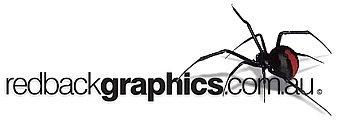If you have a Redback Graphics installed CMS website
To add an image to a page
Login to your Dashboard, under “Dashboard”, click once on “Pages”, then once on the page title of the page you want to insert an image into.
In the editing box that contains your page content, position your cursor where you would like to insert the image.
Then, above the main editing box, you have a selection of editing icons. You can mouse-over the icons to see what they do. Above the top line of icons, choose “Add Media”, click that once. Then click the “Select Files” button and locate the image from your computer, select it, then it will “Crunch” to load, you can then edit the title of the image, change the URL that links to that image, or choose “None” to remove all links. You can choose to Align it left or right or centre, so that text will wrap around the image, leave Alignment on “None” to place the image just where your cursor was positioned.
You can choose to insert a Thumbnail of the image or insert it at full size. Do not select full size unless the image will fit on the page comfortably with your text.
Click on “Insert into Post”. You should now be able to see the image or its thumbnail (depending on which you chose) in your main editing box. You can Cut and Paste to move the image to another position on your page, or even copy it into another page. You can edit the images Title by clicking on it once, then click the “Edit” icon.
You can then click the blue “Update” button over on the right side of your screen to publish the updated page. It will be live immediately.
Tip 1
Prepare images to the desired size before inserting, using photo editing software. Inserting a large image, then resizing using the options available is not ideal, only because it will take more load time for viewers and use up unecessary bandwidth. You can resize it using the options available when inserting though, if you are unable to resize before inserting.
Tip 2
It’s always handy to have another browser window open to view the “public” side of your website to see the changes without having to log in and out of your Dashboard to see the public website. The changes will be live immediately. Use CTRL+F5 in your live website browser window to force a refresh of the web page you are viewing to see the updated image and link.
Tip 3
Always backup your website before doing any updates until you are very familiar with updating pages and images etc.
See backing up your website.


